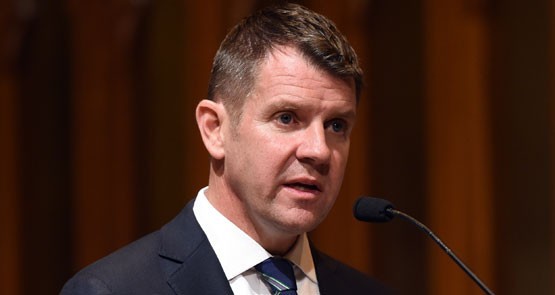
New South Wales councils are complaining bitterly, but Premier Mike Baird is right to push ahead with forced amalgamations given the lack of local government scale in Australia’s biggest state, especially compared with its nearest rivals, Victoria and Queensland.
A reduction from 152 councils to 112 will still leave NSW with 33 more councils than Victoria’s 79.
However, the NSW process has clearly been politicised with decisions such as keeping Mosman separate from North Sydney (it is merging with Manly and parts of Warringah), as part of the program to almost halve the existing 43 Sydney councils down to just 25.**
Former Victorian premier Jeff Kennett said very little about local government reform when in opposition, then promptly sacked all 210 councils for three years between 1994 and 1997 and redrew the boundaries to create 78 larger entities.
Democracy was suspended as hand-picked “commissioners” were appointed and then a system of compulsory competitive tendering was rolled out along with forced rate cuts of almost 20%, which was only possible courtesy of almost 10,000 job losses and cuts in infrastructure spending.
The Sydney Morning Herald made the following claim in Saturday’s paper about Baird’s reform program:
“The measures that seek to deliver up to $2 billion in savings echo the reforms that contributed to the downfall of Jeff Kennett in Victoria.”
Truth be known, Kennett was re-elected in a landslide in 1996, two years after forcing through the amalgamations. Local government reform was one of Kennett’s best achievements and he remains a respected authority on the subject.
Even leading ALP Left figures such as Lindsay Tanner have gone on the record saying the Kennett reforms “were brutal but they were right”.
The NSW government’s promise to save $2 billion a year will be a stretch, particularly if there are guarantees of no job losses for the first three years.
Rate-capping was introduced in 1979, so NSW councils have significantly higher local government debt and lower rates than their Victorian counterparts. There is also a much bigger infrastructure backlog that needs to be addressed with rate rises, although these have been ruled out as part of the merger process.
There are usually complications, injustices, winners and losers with council amalgamations. Merging a low-debt council with its high-debt neighbour will always cause controversy, especially where service standards are not comparable or infrastructure is failing.
WA Premier Colin Barnett failed to deliver meaningful local government reform last year because he wasn’t prepared to force the issue. Few people ever voluntarily give up power, especially elected politicians.
This has left the City of Perth as something of a small joke with just 8000 residents, compared with 120,000 in the City of Melbourne.
City of Sydney is bigger again with 180,000 residents, but the key independent adviser on the NSW reforms, Professor Graham Sansom, has slammed the proposal not to create a bigger capital city council.
City of Brisbane remains the gold standard for council scale in Australia with over 1 million residents as it covers almost half of greater metropolitan Brisbane.
Jeff Kennett has been highly critical of the timid Barnett reform process in WA. He also stuck his head up recently, calling for another round of council mergers in Melbourne so that a re-elected lord mayor Robert Doyle could play in a bigger paddock, rather than just leading one of 32 councils in greater Melbourne.
If Sydney successfully reduces to 25, there could be a move to get Melbourne below 20. It is bizarre that Tiger Woods could hit a driver from the steps of Victoria’s Parliament House into the City of Yarra, which starts on the corner of Nicholson Street and Victoria Parade, just beyond the ICI building.
Similarly, why on Earth is St Kilda Road beyond Dorcas Street, City of Port Phillip on the western side and City of Melbourne on the East? It should be one singularly governed iconic Melbourne boulevard.
Victoria, in spite of moves in Melbourne and Geelong, is behind every other state that has moved further on the question of attracting quality and respected local leadership through directly elected mayors. Annual mayoral elections are a destabilising form of governance and the current reform program in Victoria is expected to move to a minimum of two-year terms for mayors before transitioning to communities having the option of going with the directly elected model.
The biggest skill-set councillors lack is a business background, and this is largely because the money is so bad and business people don’t enjoy the scrutiny or the endless compromising in politics.
It is shame that your typical professional director doesn’t view local government as a creditable position in any good portfolio of board seats, which could comprise a not-for-profit, a public company, a private company and one council.
For this to happen, we need the Baird government to give councillors meaningful pay rises as part of the amalgamation process.
The City of Melbourne has the best paid employees of any council in Australia, with 157 earning more than $136,000 in 2014-15, largely because the top band in the current enterprise agreement has dozens of staff who, come January 1, will be earning more than $150,000.
The City of Melbourne administration has made a comprehensive submission to the current review of Victoria’s Local Government Act, which was made public on Friday.
It has lots of interesting suggestions, but didn’t venture into the sensitive territory of addressing the poor level of pay for elected councillors in Victoria, or whether the state needs another round of amalgamations.
*Stephen Mayne is an elected councillor at the City of Melbourne and chairs the Finance and Governance Committee. He was not paid for this item.
** Correction: this article originally said the Baird government planned to keep a single suburb council in Mosman.








I’m bemused that the Liberals under Colin Barnett want to make the City of Perth larger with an amalgamation after the Liberals under Richard Court had forced it to split into 4.
Can’t they make up their mind what they want?
The $2billion saving projected by KPMG was over a 20 year period. The projected annual saving is $100 million a year or not much at all actually.
The SMH report cited unlike its original report does not include this important qualification.
Mr Baird said IPART had found that local government mergers could save ratepayers nearly $2 billion over the next 20 years, which could be used to cut rates or provide better services.
Indeed Stephen,
An extension of your logic would be to have big councils, rather than City of Melbourne taking over part of City of Port Phillip as both are well run councils with reasonably happy constituents.
Jeff Kennett’s local government reforms were needed and didn’t cause him to lose office but his unwritten instruction was that they remain subservient to the state of Victoria. After all, he was the almighty Premier who wanted to stay powerful. That’s why he was voted out.
Kennett’s best decision: Federation Square. His worst: the grand prix. Less than half a billion for Fed Square and it is well used and rightly controversial in style. The grand prix was promised as not costing taxpayers a cent but has eaten up a billion dollars in direct state funds and hidden state subsidies, with nothing to show for it apart from a damning Auditor-General’s report.
Peter Logan, long time Stephen Mayne supporter and former City of Port Phillip councillor
Understandably those politicians wanting to preserve their Local Government perks are screaming, but Mike Baird should be supported strongly by Crikey if they wish to see the widespread corruption and incompetence at Local Government levels reduced.